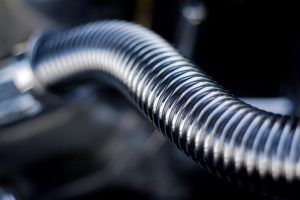
Metal hose is ideal for absorbing vibration, misalignment correction, thermal expansion or contraction of piping systems, and protecting equipment from excess motion. Typically, metal hose is used when no other (non-metallic) constructed hose will work. In other words, metal hose is used as a last resort.
Here are some of the factors that should alert you it's time to use metal hose:
- Extreme temperatures
If the temperature around the hose -- or the material passing through it -- is very hot or very cold, metal may be the only material able to hold up under extreme temperatures.
2. Aggressive chemicals
Use metal hose when working with aggressive chemicals. Stainless steel and other alloys can provide chemical and corrosion resistance. But take steps to be sure that all of your components can withstand chemical attack, whether that comes from the material being moved or the surrounding environment
3. What is the potential for catastrophic failure?
Failure in a metal hose typically comes in the form of small cracks or holes. If sudden catastrophic failure occurs, having metal hose may help mitigate the effects, as it will leak at a slower rate.
4. Are there permeation concerns?
Unlike a non-metal hose, metal hoses do now allow gases to permeate their walls. If gas containment is crucial to the operation, metal hose should be used.
5. Does the hose provide fire safety?
Non-metal hose types run the risk of melting when exposed to fire, while a metal hose will sustain its integrity against heat up to 1200 degrees Fahrenheit.
To learn more about this topic, contact Gallagher Fluid Seals. We'll be happy to help you advance your next project.
